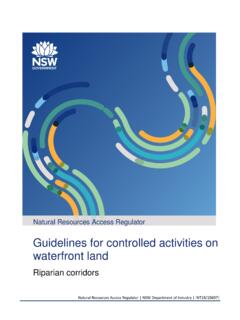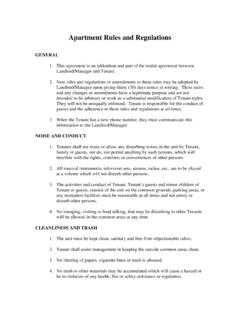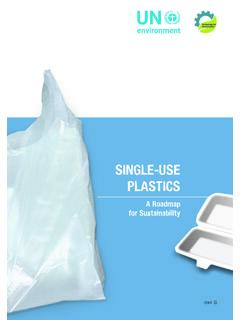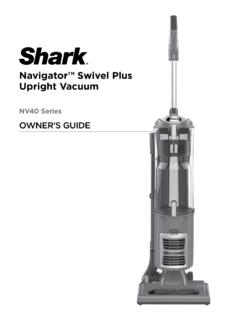Transcription of NSW Waste and Sustainable Materials Strategy 2041
1 1: 2021 2027 Department of Planning, Industry and EnvironmentNSW Waste and Sustainable Materials Strategy 2041 Find out more: Title: NSW Waste and Sustainable Materials Strategy 2041 Subtitle: Stage 1: 2021 2027 First published: June 2021 Acknowledgements State of New South Wales through Department of Planning, Industry and Environment 2021. Information contained in this publication is based on knowledge and understanding at the time of writing (June 2021) and is subject to change. For more information, please visit of countryThe Department of Planning, Industry and Environment acknowledges the traditional custodians of the land and pays respect to Elders past, present and recognise Australian Aboriginal and Torres Strait Islander peoples unique cultural and spiritual relationships to place and their rich contribution to Department of Planning.
2 Industry and Environment | NSW Waste and Sustainable Materials Strategy 2041 ContentsMinister s message 4 Purpose of the Strategy 6 Part 1 9 Context and background 9 Part 2 18 Our plan 18 Part 3 39 Consultation schedule 39 Appendix 42 References 42 Department of Planning, Industry and Environment | NSW Waste and Sustainable Materials Strategy 2041 iii Minister s messageThe Honourable Matt Kean MP Minister for Energy and EnvironmentNew South Wales is committed to playing its part in making the transition to a circular economy over the next 20 action now, and without sustained action over the next two decades, we will have more Waste than we can safely manage, and our environment and community will be at to a circular economy means we use our resources efficiently and make them as productive as possible.
3 We will end up with less Waste and emissions, less harm to our environment and more jobs. The move will boost innovation and help drive our economy can create a circular economy by designing out Materials that end up in landfill or as litter, reusing or repairing products before they are thrown out, and recycling material so it can be used multiple times in manufacturing or the same time, we need to make sure we have the services and infrastructure in place to deal with our Waste safely so it does not become a problem for future NSW Government cannot make this transition alone we need to work with consumers, industries and other governments to make it a this Strategy , we have outlined the actions we will take over the next six years the first phase of our Strategy to deliver on our long-term objectives.
4 We have also set out our plan to tackle plastics in the NSW Plastics Action Plan, which sits alongside this actions are backed by $356 million in funding to help deliver priority programs and policy of our key reforms include: phasing out problematic single-use plastic items financial incentives for manufacturers and producers to design out problematic plastics having government agencies preference recycled content and invest in research and pilots for recycling innovation introducing tighter environmental controls for energy from Waste in NSW, with further consideration of planning and infrastructure needs underway mandating the source separation of food and garden organics for households and selected businesses incentivising biogas generation from Waste are important first steps on our journey to 2041 a journey we will take Department of Planning, Industry and Environment | NSW Waste and Sustainable Materials Strategy 2041 Figure 1.
5 Circular economy Reuse, remanufacture, redistribute ProduceCollectRecycleResidualRaw materialEnergy recovery and disposalLeakage (litter and illegal dumping)Share, repairRecovered MaterialsSort/Distribute End of useConsumeSell/LeaseDepartment of Planning, Industry and Environment | NSW Waste and Sustainable Materials Strategy 2041 5 Purpose of the strategyThe NSW Waste Avoidance and Resource Recovery Act 2001 commits the NSW Government to refreshing and updating its Waste Strategy every five years to review and continually improve the state s policies and targets for Waste reduction and landfill diversion. This Strategy updates our previous Waste Avoidance and Resource Recovery Strategy 2014 well as Waste reduction and recycling, this NSW Waste and Sustainable Materials Strategy 2041: Stage 1 2021-2027 focuses on the environmental benefits and economic opportunities in how we manage our Waste .
6 This document sets out the actions we will take in the first stage of the Strategy to carry us through to 2021, we will move on our highest priority actions and lay the foundations for actions that will begin progressively from July 2022, when the full Strategy stage one funding package complement this Strategy , we have also released the: NSW Plastics Action Plan, which sets out how we will phase out problematic plastics, tackle litter from plastic items like cigarette butts , and support innovation and research NSW Waste and Sustainable Materials Strategy : A guide to future infrastructure needs, which sets out the investment pathway required for NSW to meet future demand for residual Waste management and and reviewing our progressIn 2019, New South Wales agreed to a set of targets as part of the National Waste Policy Action Plan.
7 In this Strategy , we commit to adopting these targets as the NSW targets. During the first stage of our Strategy , we will measure our progress towards these targets to ensure we are on targets are to: reduce total Waste generated by 10% per person by 2030 have an 80% average recovery rate from all Waste streams by 2030 significantly increase the use of recycled content by governments and industry phase out problematic and unnecessary plastics by 2025 halve the amount of organic Waste sent to landfill by with our commitments to the National Waste Policy Action Plan, we will also continue to improve our data collection and addition to these targets, we will: introduce a new overall litter reduction target of 60% by 2030 and a plastic litter reduction target of 30% by 2025, as set out in the NSW Plastics Action Plan set a goal to triple the plastics recycling rate by 2030, as set out in the NSW Plastics Action Plan reaffirm our commitment to the goal of net zero emissions from organic Waste by 2030, as laid out in the NSW Net Zero Plan Stage 1: 2020 2030 establish new indicators to help us track our progress on infrastructure investment and the cost of Waste services develop a new measure of the emissions performance of our Waste and Materials management.
8 This will help us to track our performance across the lifecycle of will report on our progress annually and we will review the Strategy prior to Department of Planning, Industry and Environment | NSW Waste and Sustainable Materials Strategy 20415 YEAR TARGETSP hase out problematic and unnecessary plastics by 2025 Plastic litter reduction target of 30% by 202510 YEAR TARGETSR educe total Waste generated by 10% per person by 203080% average recovery rate from all Waste streams by 2030 Introduce a new overall litter reduction target of 60% by 2030SU B -TARG E TS PLASTICSE liminate problematic and single use plastics by 2025 Triple the plastics recycling rate by 2030SU B -TARG E TS ORGANICSH alve the amount of organic Waste sent to landfill by 2030 Net zero emissions from organics to landfill by 2030 Department of Planning.
9 Industry and Environment | NSW Waste and Sustainable Materials Strategy 2041 7 8 Department of Planning, Industry and Environment | NSW Waste and Sustainable Materials Strategy 20411 Global action is shifting us towards a circular economyThe global economy consumes 90 billion tonnes of primary Materials each year. This is projected to double by 20601. However only 9% of this material is recycled2. This is impacting the world around us, with an estimated 150 million tonnes of plastics now in the marine have started to tackle the Waste challenge by changing how they manage the lifecycle of Materials . In contrast to the traditional linear economy, which has a take, make, dispose model of production, a circular economy aims to eliminate Waste and reduce the continual use of new resources.
10 Circular systems employ reuse, sharing, repair, refurbishment, remanufacturing and recycling to use resources efficiently and minimise the creation of Waste , pollution and carbon emissions. The circular economy aims to keep products, equipment and infrastructure in use for economy policies in Europe and the United Kingdom have led a significant shift towards more producer responsibility, resource recovery systems that are set up to preserve and improve the value of Materials , and strong economic incentives to avoid the generation of waste4. The United Nations has endorsed a set of Sustainable Development Goals for 2030, with specific goals aimed at protecting the environment and encouraging responsible consumption and , many other countries have taken bold steps to protect their environments from the negative impacts of Waste , starting with bans on the types of material they 2018, China and other nations throughout Asia have stopped importing recyclable Waste .






